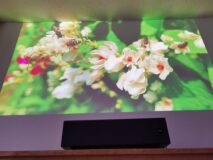
TV or projector? It’s one of the great tech debates, especially for large screen sizes. For most people, it depends on the price, and the room it’s going in. Since projectors require a large room, most people with smaller rooms get a television. However, with the introduction of ultra-short throw laser projectors, the debate is changing. These projectors are positioned very close to the screen; so, you no longer need a large room to use a projector. All you need is a wall or dedicated projector screen.
I’m reviewing the BenQ 4K UHD Home Theatre Projector (V7050i). It’s a high-end, premium ultra-short throw laser projector. It can be placed close to a screen for screen sizes ranging from 70 to 120 inches. Is this a better investment than a 4K television? Let’s find out.
Notable specs: BenQ V7050i projector
- 2500 ANSI lumens view even in mild ambient light
- Up to 120″ at 4K UHD (3840 x 2160) resolution and 16:9 aspect ratio
- Two HDMI inputs and three USB ports, Android TV dongle included
- Lamp lifetime of 20,000 hours
Design of the BenQ 4K UHD Home Theatre Projector (V7050i)
This is the first ultra-short throw projector I’ve ever reviewed. Compared to long throw projectors, it’s much bigger and bulkier. It measures approximately 20”x15”x6” (HWD) and weighs 22 lbs. On top, the power button is located on the lower right. Pressing it activates a motorized lens cover. This is by far the projector’s most visually interesting feature. It looks super cool and prevents dust from collecting on the lens when not in use. One caveat though: when the lens cover is open and the lamp it shining, don’t look directly into the light as it is very, very bright.
The left and right sides of the projector have grille vents. This allows airflow and heat dissipation so be careful not to block these. Near the back, on the right side, are two USB-A ports. One of these is required to power the Android TV dongle. More on that later.
Port options for the BenQ V7050i projector
The front of the projector houses two 5W treVolo speakers; I’ve covered this type of speaker before and I’ll talk about them below. On the back, there are two HDMI ports, a USB-A port, an RS-232 port, and a SPDIF port. One of the HDMI ports is reserved for the QS01 Android TV dongle. A sticker indicates which port is designated for the dongle.
Setting up the BenQ V7050i projector
I tested the projector in my high-tech themed Airbnb suite. There, I have a 1080p long throw projector installed on the ceiling. It faces a wall that I painted white to create a 165” screen. For the most part, this works okay with my 1080p projector. Ideally, I should review the BenQ 4K UHD with an ALR screen (more on that below).
After inserting the BenQ QS01 Android TV dongle into the back, I placed the BenQ projector on a coffee table and under the wall. Once on, I noticed the screen was uneven. I adjusted the feet up on the right side to level the screen. Using my Android phone, I followed the on-screen instructions to set up the Android TV dongle. In all, the entire setup took about 10-15 minutes.
Positioning and screen size adjustments
As mentioned, the BenQ V7050i projector can create image sizes ranging from 70”-120”. Like long throw projectors, the screen size depends on the distance from the screen. The farther the distance, the bigger the screen. With ultra-short throw projectors like the BenQ V7050i, the distance from the screen is in inches, rather than feet.
According to the manual, I needed a projection distance of 33cm from the screen to get a 120” screen size. What I soon realized is that it worked better on the ground than on the coffee table I originally had it on. With the V7050i on the ground, I was able to get a bigger screen size.
Using the BenQ V7050i projector
Once I had the projector properly positioned, I had the arduous task of watching YouTube videos from a reclining chair. My work is tough—blood, sweat, and beers went into this review. Generally speaking, ultra-short throw projectors work well in bright rooms (a fact that weighs heavily in their favour over other types of projectors). Therefore, I reviewed it in daytime conditions to assess its performance in brighter environments. I was very impressed with the image quality, especially in daytime conditions. The image was bright and the colours really popped out. Having a 1080p projector, I can see the difference a 4K projector provides. In my video review, you can see the image quality for yourself.
The BenQ QS01 Android TV dongle is very easy to use. I was also surprised by the sound quality of the two 5W treVolo speakers. With its placement in front of the screen, the BenQ V7050i acts like a sound bar as well. In that sense, it’s a two-in-one device, both a 4K projector and mini sound bar in one—with very good audio too.
Should you get the BenQ V7050i instead of a 4K TV?
I think the BenQ V7050i appeals to tech early adopters the most but also anyone looking to create a modern home theatre experience in their home. This is new technology and fellow geeks like myself would definitely appreciate its design. Furthermore, it’s going to require some testing and adjusting before doing a permanent installation. Some people like myself, enjoy physically testing the projector’s size, distance, and optical characteristics prior to a permanent installation. Others may not enjoy that. Either way, to get the most out of it, you have to play around because every room is different. Best Buy does have services available to ensure anyone can get the most from a projector like this.
What kind of screen should you use?
If you want the best image possible, the BenQ V7050i should be used alongside an ambient light rejection screen, commonly known as an ALR screen. Unlike common screens that reflect the incoming light uniformly in all directions, the ALR screen selectively reflects light back to the audience. The projector’s light is bounced towards the audience while the other ambient light in the room is reflected back in another direction.
In my case, I’m using a wall painted a flat white. I’ve used this as my projector screen and I’m happy with the result. However, if I had an ALR screen, the image quality would be noticeably brighter in fully lit indoor settings. So if you want to do it right, get an ALR screen.
Final thoughts
Given the choice, I will always choose a projector over a new television. The new 4K projectors I’ve reviewed in the past have really impressed me. Ultra-short throw projectors give projector fans like myself more options to consider and the V7050i is a very impressive addition to any home theatre.
That said, I had a couple of issues that I would like to point out. First, I wonder why the BenQ QS01 Android TV dongle was not built into the projector like in the BenQ TK850i? Instead, having the dongle sticks out in the back seems avoidable. Second, two HDMI ports, though standard for most projectors, are not enough, especially when the dongle takes up one of them. I highly recommend getting an HDMI splitter if you need to connect multiple devices such as gaming consoles, laptops, streaming sticks, and more. That’s what I use and it makes life so easy (and easy to get delivered to your home from Best Buy).
In all, I was very impressed with how it functions as a two-in-one device. The built-in speakers are pretty good and the image quality was bright and colourful. Just remember, you will need to geek out with this before doing a permanent installation.
If you’re in the market for an ultra-short throw projector, I highly recommend you check out the BenQ V7050i 4K UHD Home Theatre Projector (V7050i).

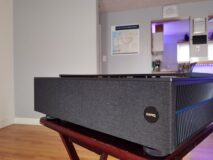
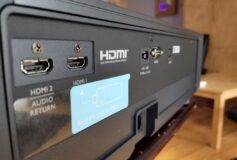
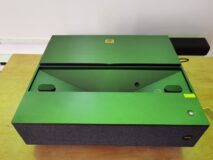
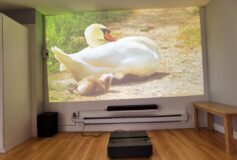
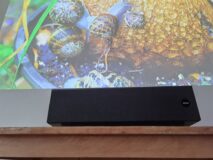
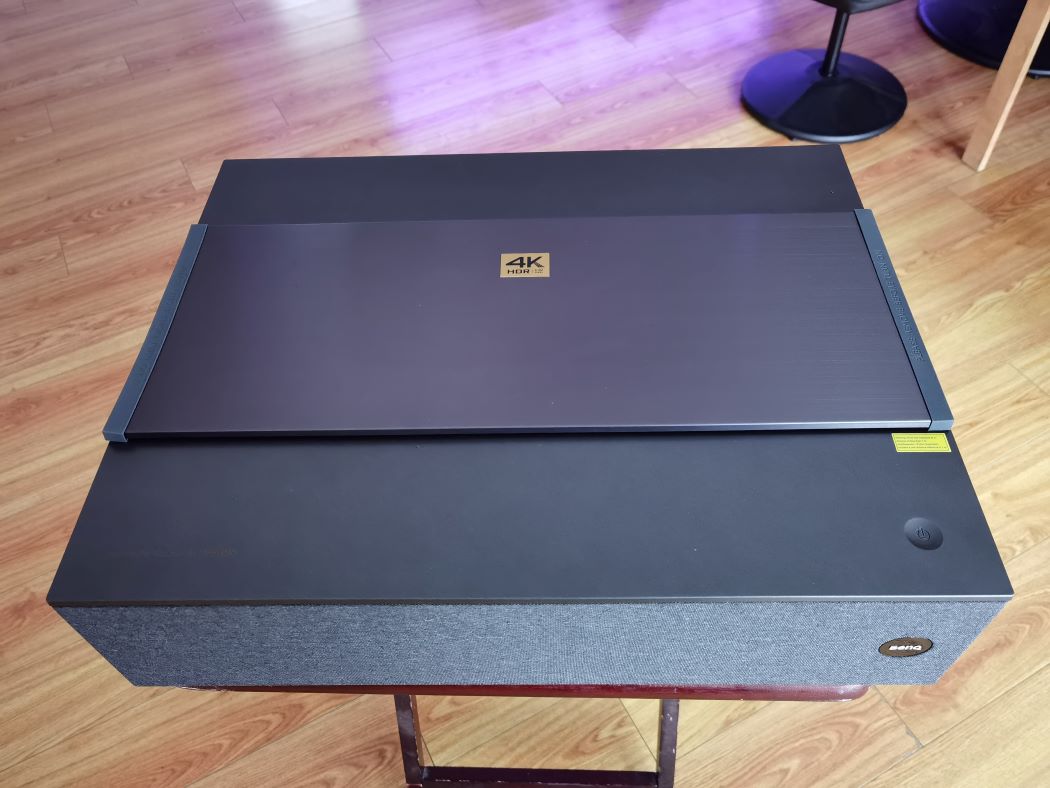
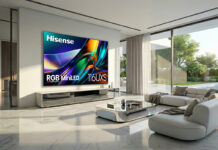


I would say that the price is a little high side.
The good thing is it also comes with an Android dongle too.
I’d set this up in the family room, projecting against the back wall.
I’d use this in our den on a white wall so we could have family movie nights in style!
I’d use this in the living room on a wall for the time being.Great review!
I would use this projector in our living room and use a pull down screen.
I would use this projector in my basement tv room and would try to project it on a white wall.
I think I would set this up for the wall in our basement
I would use this in my basement family room and I would like a pull down screen, this would be amazing
This be set up in the living room on a table and projected onto a wall that would be white painted.
This would be set up in the basement on a table and projected onto a wall that would be painted a nice white
I think This would be set up in the basement on a table and projected onto a wall that would be painted white
I’d set this up in my loft and would use an ALR screen. Great in-depth review!
I would use this in the basement against a wall. Good ambient light control so a ALR screen not necessary.
I would use this in my loving room with an ambient light rejecting screen.
This be set up in the basement on a table and projected onto a wall that would be painted white.
I would use this projector in my great room on a white screen
I would use this projector in our basement family room and project it on a white wall
in our basement recreation room and use a large white wall for the projection.
i would use this in my basement room projected on a white wall
i would set it up in our basement recreation room and use a large white wall for the projection.
In the living room against a white wall.
living room on a white wall
i would use this in my basement.
In the living room against a white wall.
I would use this projector in my living room projected on a white wall
i would use this in my basement rec room
Hmm…if we could afford to would use the ALR screen. Otherwise would have to say the wall in the living room.
I would use this projector in the basement and buy a screen to project it on.
I would use this projector to project on to a white wall in my bedroom
I would use it in our living room and use a large white wall for the projection.
I would put it in the living room on a small table.
i would set it up in our basement recreation room and use a large white wall for the projection.
I would use it in our family room
Comments are closed.